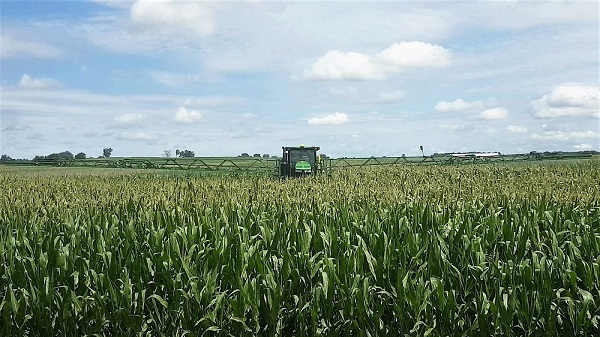What’s Up in 2021 for Fungicides on Corn Silage?
July 23, 2021
Every year is different, and 2021 is no exception. With record high crop prices, an early planting window across most of Canada, and now a wet July in Eastern Canada, it has never been more favourable for a fungicide application for your corn silage crop.
In our Maizex agronomy work over the last number of years, fungicides have been consistently showing the highest ROI in our intensive management trials. When considering fungicides, we normally evaluate the environment, host, and pathogen relationships to predict whether a fungicide application is justified. This is also known as the disease triangle, where the environment is the growing season (hot/cold/wet/dry), the host is the crop (stage/potential/susceptibility), and the pathogens are the fungal diseases that can be detrimental to your crop and are normally present in our fields each year.
For 2021, we are seeing the stars lining up. We have a great crop that has very good yield potential and warrants being protected. We are seeing a lot of warm, wet weather in July, which allows for fungal diseases to flourish. Throw in expensive feed costs, and the decision to spray a VT fungicide becomes a must.
Why do we spray fungicides? Fungicides help protect the plant from fungal diseases like rust and northern corn leaf blight. These diseases compromise the plant’s ability to photosynthesise and produce yield, which equates to less starch per acre. They can also physically destroy plant biomass by ‘eating’ leaf tissue, reducing your overall volume and tonnage. We have also found that fungicides help to improve overall feed quality by improving stay-green and preserving fiber digestibility. By protecting your crop, fungicides ultimately allow you to increase your tonnage and improve your feed quality.
Lastly, there are some fungicides that offer a mode of action that suppresses DON mycotoxins in corn silage. In order to reduce the toxin load in your feed, you need to apply the correct fungicide during the corn silking period to reduce the initial DON infection. It is not a silver bullet, but when given the option to choose a fungicide, I would ensure to use one with activity on DON. Fungicides that offer this protection would include Miravis Neo, Proline, and Caramba. There are also other products that offer these active ingredients in a preformulated product.
The ideal time to spray fungicide on your corn silage is at VT-R1. Simply put, this means waiting to see tassel emergence through to silk emergence and pollination. It is best to apply before the silk has turned brown. When trying to reduce DON toxins in your corn silage, it is essential that silks are present in order have protection.
